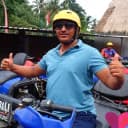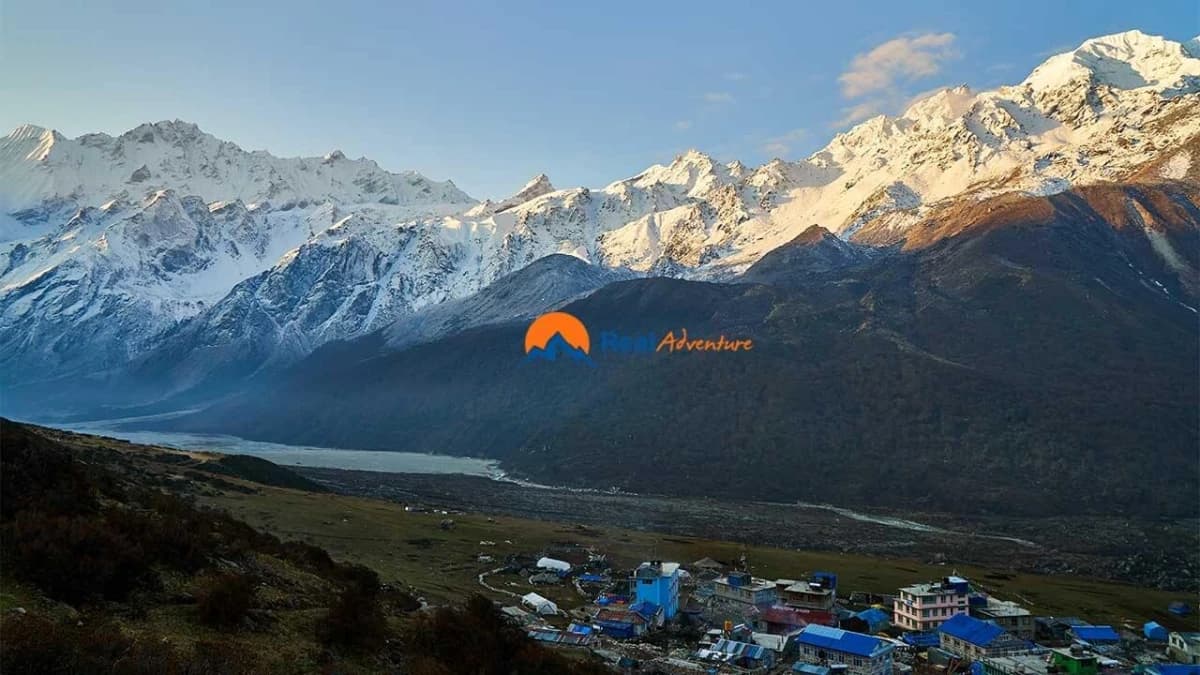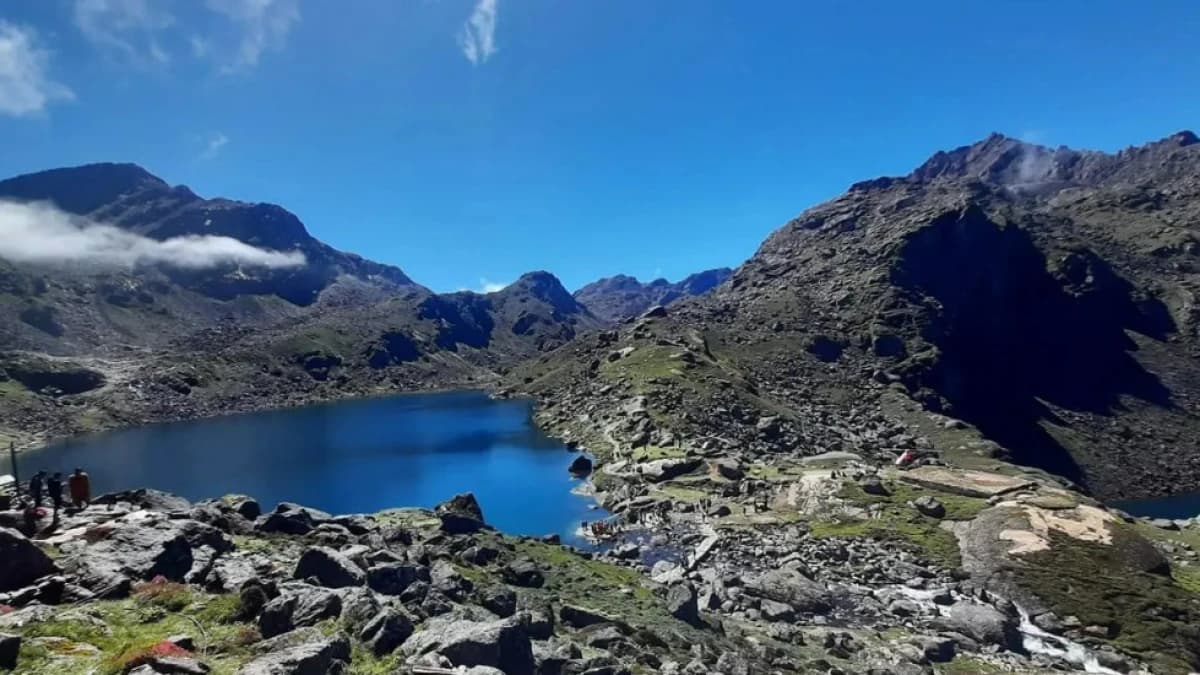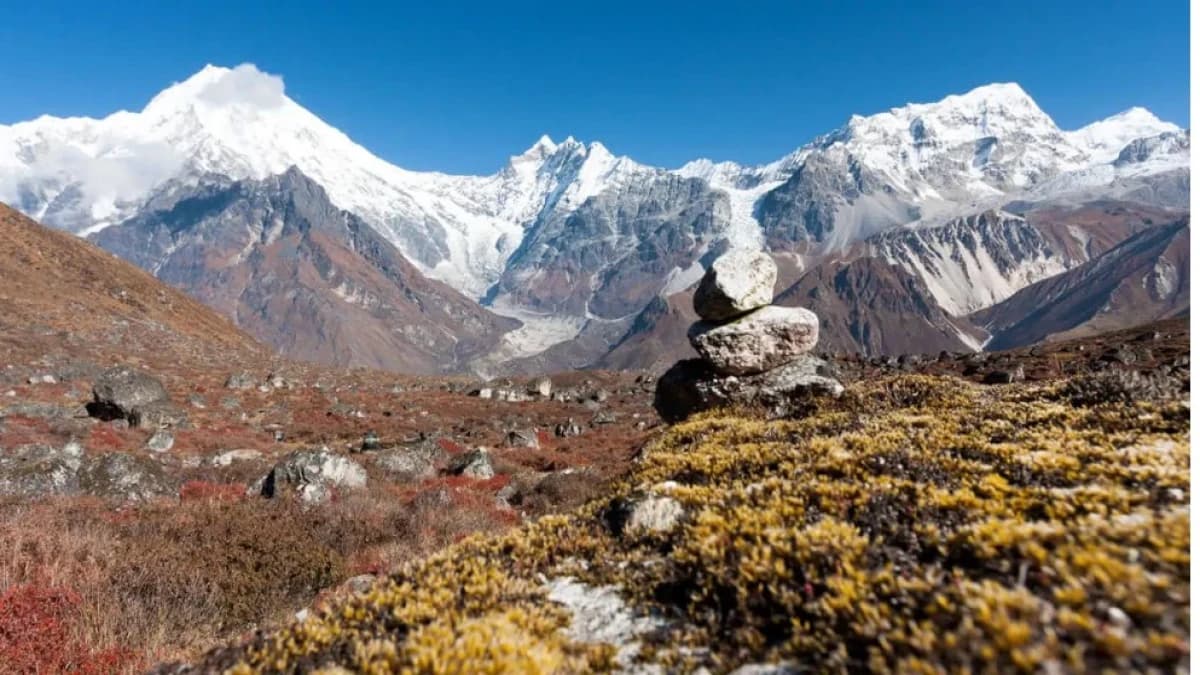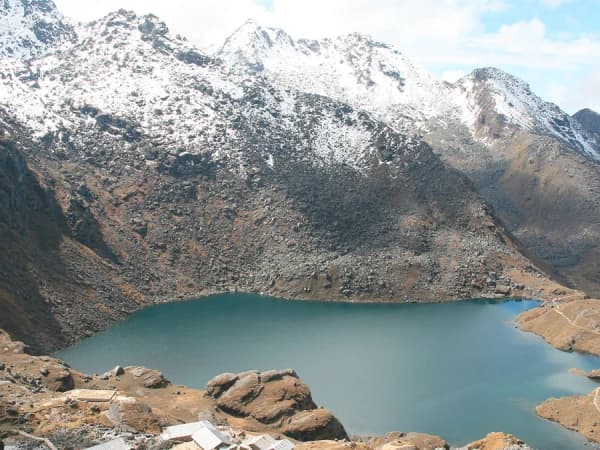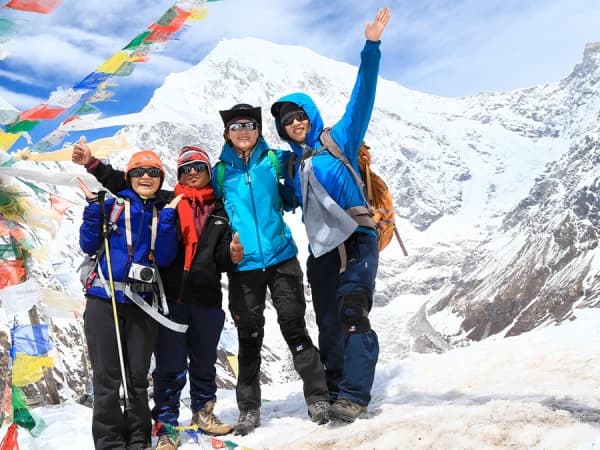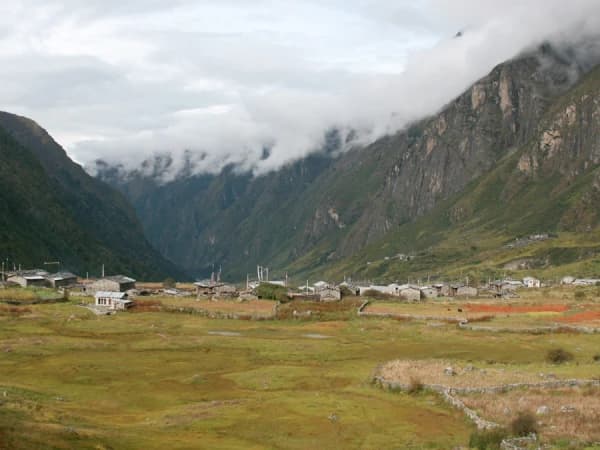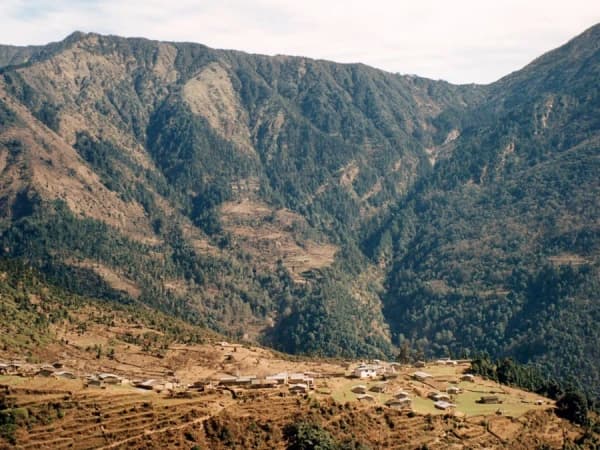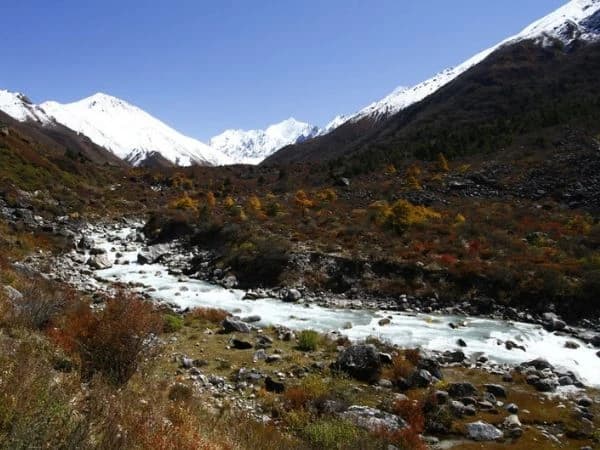A Complete Himalayan Journey of Culture, Lakes & Mountains
The Langtang Gosaikunda Helambu Trek is one of the most scenic and culturally rich trekking routes in Nepal. This classic Himalayan adventure combines the natural beauty of Langtang Valley, the sacred alpine lakes of Gosaikunda, and the peaceful villages of the Helambu region in a single unforgettable journey. Ideal for trekkers looking for a less crowded trail near Kathmandu, this trek offers snow-capped mountain views, high mountain lakes, ancient monasteries, and authentic village life.
The trek usually starts with a drive from Kathmandu to Syabrubesi, the gateway to Langtang National Park. From here, the trail follows the Langtang River through lush forests of rhododendron, bamboo, and pine. As you move deeper into the valley, you pass traditional Tamang villages such as Lama Hotel, Langtang Village, and Kyanjin Gompa. This region is famous for Tamang culture, Tibetan-influenced traditions, prayer wheels, mani walls, and mountain monasteries. From Kyanjin Gompa, trekkers can enjoy breathtaking views of Langtang Lirung (7,227m) and nearby peaks.
After exploring Langtang Valley, the route heads toward the holy Gosaikunda Lake, one of the most important pilgrimage sites in Nepal. Located at around 4,380 meters, Gosaikunda is a group of sacred alpine lakes revered by both Hindus and Buddhists. According to legend, Lord Shiva created the lake with his trident. During the Janai Purnima festival, thousands of pilgrims visit this holy site. The trail to Gosaikunda offers dramatic landscapes, high mountain passes, and stunning Himalayan panoramas.
From Gosaikunda, the trek continues across the Lauribina La Pass, one of the highlights of the journey. The descent leads into the beautiful Helambu region, known for its green hills, terraced farmland, and Sherpa villages. Helambu is home to the Hyolmo people and offers a peaceful trekking experience with fewer crowds. Villages like Melamchi Gaon, Tarkeghyang, and Sermathang showcase traditional stone houses, ancient monasteries, and warm local hospitality.
The Langtang Gosaikunda Helambu Trek is considered a moderate to challenging trek due to altitude and long walking days, but it does not require technical climbing skills. It is suitable for trekkers with good fitness and a desire to explore diverse landscapes. The trek usually takes 14 to 18 days, depending on the route and pace.
Best seasons for this trek are spring (March to May) and autumn (September to November), when the weather is clear and mountain views are at their best. This trek is perfect for travelers seeking a complete Himalayan experience with mountains, sacred lakes, cultural villages, and natural beauty close to Kathmandu.
Main Highlights of Langtang Gosaikunda Helambu Trek
- Classic Himalayan trek combining Langtang Valley, Gosaikunda Lakes, and Helambu region in one journey
- Less crowded trekking route near Kathmandu, ideal for peaceful and authentic experiences
- Scenic drive from Kathmandu to Syabrubesi, the gateway to Langtang National Park
- Trek through rhododendron, bamboo, and pine forests along the Langtang River
- Exploration of traditional Tamang villages such as Lama Hotel, Langtang Village, and Kyanjin Gompa
- Rich Tamang and Tibetan-influenced culture with prayer wheels, mani walls, and monasteries
- Panoramic views of Langtang Lirung (7,227m) and surrounding snow-capped Himalayan peaks
- Visit to Kyanjin Gompa, a spiritual and scenic highlight of Langtang Valley
- Trek to the sacred Gosaikunda Lake (4,380m), an important Hindu and Buddhist pilgrimage site
- Stunning alpine lakes, high mountain landscapes, and dramatic Himalayan scenery
- Crossing the Lauribina La Pass, one of the most rewarding high points of the trek
- Descent into the beautiful Helambu region with green hills and terraced farmland
- Cultural immersion in Hyolmo (Helambu Sherpa) villages like Melamchi Gaon, Tarkeghyang, and Sermathang
- Experience ancient monasteries, traditional stone houses, and warm local hospitality
- Moderate to challenging trek with no technical climbing required
- Ideal duration of 14–18 days, depending on route and pace
- Best trekking seasons: Spring (March–May) and Autumn (September–November)
- Perfect trek for travelers seeking mountains, sacred lakes, rich culture, and diverse landscapes close to Kathmandu
What Is the Langtang Gosaikunda Helambu Trek and Why Is It One of Nepal’s Best Scenic Treks?
The Langtang Gosaikunda Helambu Trek is a classic long-distance Himalayan trekking route in Nepal that beautifully combines mountain scenery, sacred alpine lakes, and rich cultural heritage. This trek links three unique regions—Langtang Valley, the holy Gosaikunda Lakes, and the peaceful Helambu region—into one rewarding journey, making it one of the most scenic and diverse treks near Kathmandu. Starting just a few hours’ drive from the capital, the trail enters Langtang National Park, where trekkers walk through lush forests, river valleys, and traditional mountain villages surrounded by snow-capped peaks.
What makes this trek special is its variety. In Langtang Valley, trekkers experience dramatic mountain landscapes and strong Tibetan-influenced Tamang culture. The route then climbs to the sacred Gosaikunda Lake, a high-altitude pilgrimage site revered by both Hindus and Buddhists. Finally, the trail descends into the green hills of Helambu, known for Sherpa and Hyolmo villages, terraced farms, and ancient monasteries. Compared to Everest and Annapurna regions, this trek is less crowded, offering a quieter and more authentic Himalayan experience. With its mix of natural beauty, spiritual importance, and cultural encounters, the Langtang Gosaikunda Helambu Trek is widely regarded as one of Nepal’s best scenic trekking adventures.
How Difficult Is the Langtang Gosaikunda Helambu Trek and Who Is It Suitable For?
The Langtang Gosaikunda Helambu Trek is considered a moderate to challenging trek, mainly due to its length, altitude, and several long walking days. While it does not involve technical climbing or mountaineering skills, trekkers must be physically fit and prepared for sustained uphill and downhill walking. The highest point of the trek is the Lauribina La Pass, which sits above 4,600 meters, making altitude acclimatization very important. Walking hours typically range from five to seven hours per day, with some demanding sections, especially during the climb to Gosaikunda and the pass crossing.
This trek is best suited for trekkers with previous hiking experience or those who maintain good physical fitness and enjoy long-distance walking. First-time trekkers can also complete the route successfully if they prepare well, walk at a steady pace, and allow proper acclimatization days. It is an excellent choice for travelers who want a complete Himalayan trekking experience without extreme technical difficulty. The trek is not recommended for those with serious altitude sensitivity or limited time. Overall, it suits adventure seekers, nature lovers, and cultural explorers who are ready for a rewarding physical challenge and diverse landscapes.
What Is the Best Time to Do the Langtang Gosaikunda Helambu Trek for Clear Mountain Views?
The best time to do the Langtang Gosaikunda Helambu Trek is during spring (March to May) and autumn (September to November), when weather conditions are most stable and mountain views are at their best. During spring, the trails come alive with blooming rhododendrons and wildflowers, especially in the lower forests of Langtang and Helambu. Temperatures are moderate, and clear mornings offer stunning views of Langtang Lirung and surrounding Himalayan peaks.
Autumn is considered the most popular season due to crisp air, dry trails, and excellent visibility after the monsoon rains. The skies are usually clear, making this season ideal for photography and long-distance mountain views. Major festivals like Dashain and Tihar also add cultural richness to the journey. Winter trekking is possible but challenging due to snow around Gosaikunda and Lauribina Pass, while the monsoon season brings heavy rain, leeches, and cloudy views. For the best balance of scenery, safety, and comfort, spring and autumn remain the top seasons for this trek.
How Many Days Does the Langtang Gosaikunda Helambu Trek Take and What Is the Route?
The Langtang Gosaikunda Helambu Trek usually takes 14 to 18 days, depending on the chosen route, walking pace, and acclimatization days. The journey typically begins with a drive from Kathmandu to Syabrubesi, the main entry point to Langtang National Park. From here, trekkers follow the Langtang River through Lama Hotel and Langtang Village, gradually ascending to Kyanjin Gompa, the cultural and scenic heart of Langtang Valley.
After exploring Kyanjin Gompa and nearby viewpoints, the trail turns south toward Gosaikunda. This section involves steady uphill walking through high alpine terrain to reach the sacred lakes. From Gosaikunda, trekkers cross the Lauribina La Pass, one of the most challenging and rewarding parts of the trek. The route then descends into the Helambu region, passing through villages like Melamchi Gaon, Tarkeghyang, and Sermathang before ending near Kathmandu. This route structure allows trekkers to experience dramatic changes in landscape, culture, and climate throughout the journey.
What Are the Major Highlights of the Langtang Gosaikunda Helambu Trek, Including Gosaikunda Lake and Lauribina Pass?
The Langtang Gosaikunda Helambu Trek is packed with memorable highlights that make it a truly complete Himalayan adventure. One of the main attractions is Langtang Valley, known for its stunning mountain views, glaciers, and strong Tamang cultural presence. Kyanjin Gompa offers close-up views of Langtang Lirung and surrounding peaks, along with ancient monasteries and peaceful alpine scenery.
Another major highlight is Gosaikunda Lake, located at around 4,380 meters. This sacred alpine lake holds deep religious significance and is surrounded by dramatic high-altitude landscapes. The crossing of Lauribina La Pass is both challenging and rewarding, offering panoramic views of the Himalayas and marking the transition from high mountain terrain to green mid-hills. The Helambu region adds a cultural contrast with its Hyolmo villages, terraced fields, monasteries, and warm local hospitality. Together, these highlights create a trek that blends natural beauty, spiritual depth, and cultural richness, making it one of Nepal’s most diverse trekking experiences.

